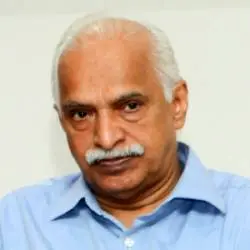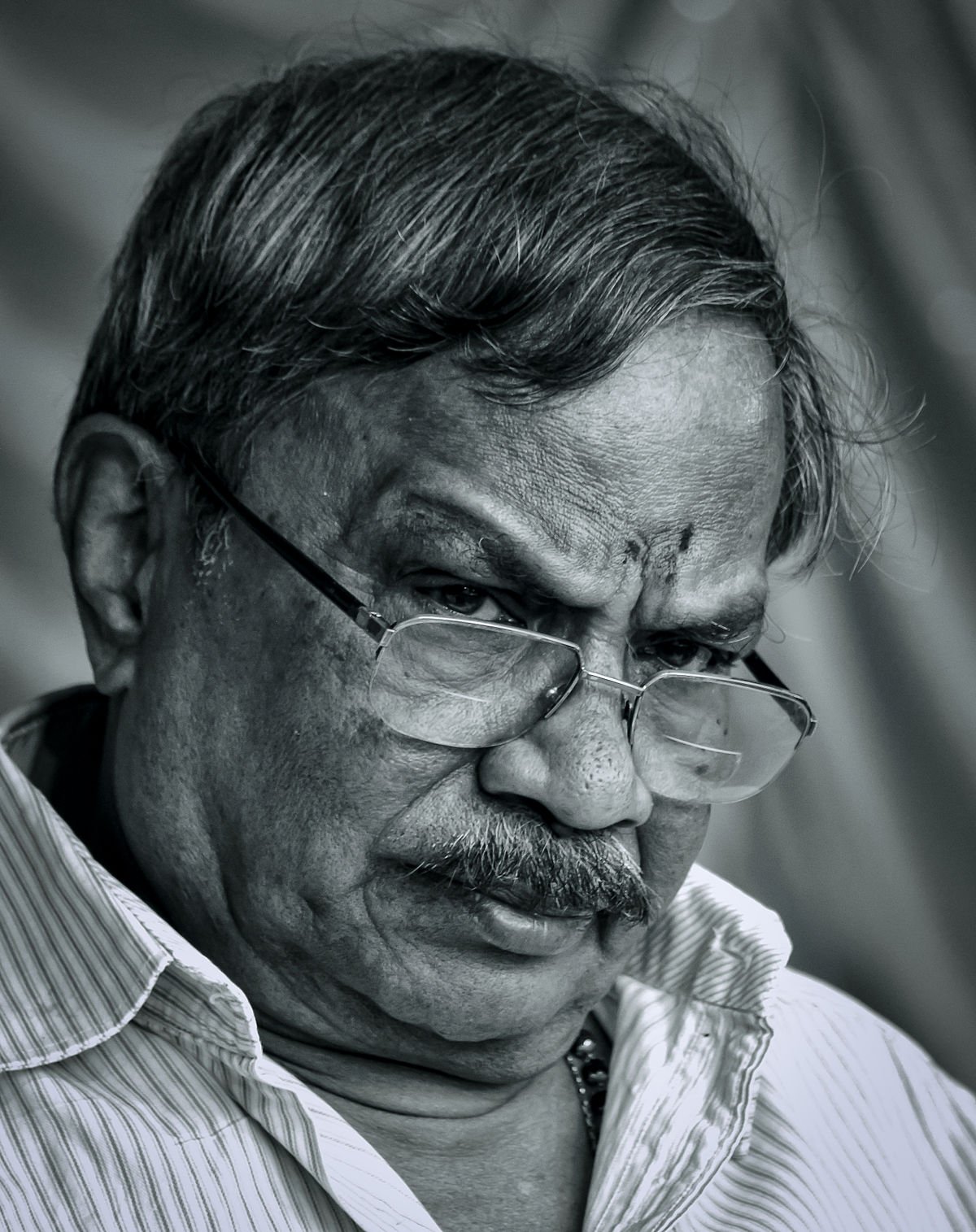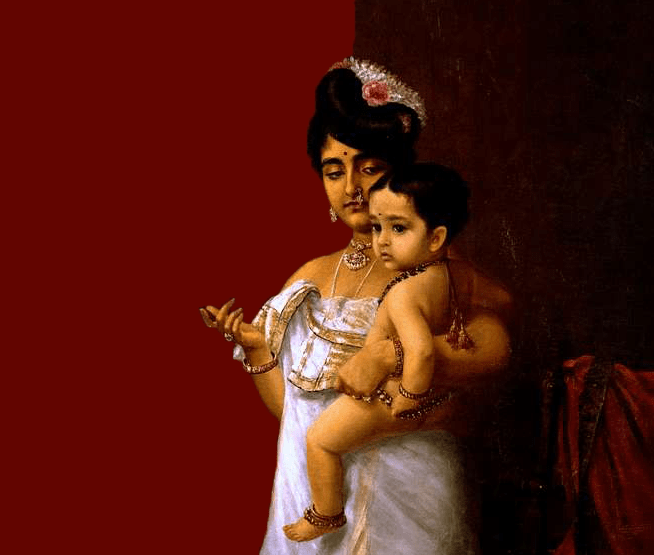

When does the story of Naalukettu take place?
There is no historic event in the novel that points to a discernible time period. A great natural calamity is described in the book. The Bharathapuzha river begins to flood, changing the course of the story. When the waterflow from the mountain tops increases causing the river to break its banks and inundate the low-lying areas of Kudallur in the Pattambi region of Palakkad District, Sankaran Nair puts Paarukutty in a small boat. He rescues her from a house that is about to crumble in the deluge. The catastrophe the novel describes is the cyclonic storm and the consequent flooding of Central Kerala in the year 1942. If one were to drop anchor at this event and imagine the times before and after it, it becomes possible to intuit the period in which the novel is set.
The year the disaster takes place, Appunni completes class eight and enrolls in the ‘fourth form’ at Thrithala High School. He is fifteen at that time—implying that he was born in 1927. When Appunni turns three, which is to say in the year 1930, his father, Kondhunni Nair is murdered. But, he remains etched in Appuni’s memory as a big-boned, well-built personage. After completing his final year of schooling in 1944, Appunni secures a job at a hotel in Wayanad with the help of Seydalikkutty. Five peaceful work-years follow in Wayanad. Eventually, Appunni returns home in 1949, purchases the ancestral naalukettu house from his senior-most uncle, and settles his mother and Sankaran Nair there. The novel ends thus. The entire narrative is set over the few years between 1941 and 1949. The period between 1926 and 1941 are recounted through flashbacks.
The 1940s was a pre-eminent period in Kerala history. Both within and without Kerala, history was being made at a frenetic pace, one event after another. World War II, the freedom struggle, independence, Congress, Communism. . . the count of historic milestones that peppered that short span of eight years is staggering. And yet, not one of these events is ever depicted in the novel. Not one single word, or an indirect reference, or a tiny note, or even a passing mention by a minor character, or simply as something someone is aware of. On the other hand, the novel charts an intricate map of a town called Kudallur where the story is set. With just the novel’s description of the town’s river, the Pooman canal that drains into the river, the elevated parambu lands, agricultural fields, roads, bylanes, riverbeds, markets, schools, the Yagneswara temple, the post office, and so on, one can easily construct a schema of Kudallur. So also, the novel captures in great detail, the myriad hues of the varied cast of people in the town. There are more than a hundred characters, both important and unimportant, in the novel. Thirty-eight characters are introduced by the time we get to the seventy-fifth page. The novel gives us the full addresses of several of the characters, so much so that if we were to write a letter, it would most certainly reach its intended recipient. It is not only the names of people, but their family, caste, religion, caste hierarchies, power structures, man-woman relationships, variations in dialect, the food they eat, the games they play, the gods they worship, their livelihoods, and much more that is embedded in the novel. It documents how people lived in the village of Kudallur between 1927 and 1949, almost in the manner of a historical account, and yet, as objectively and emphatically as would be rare to find in a historical text.
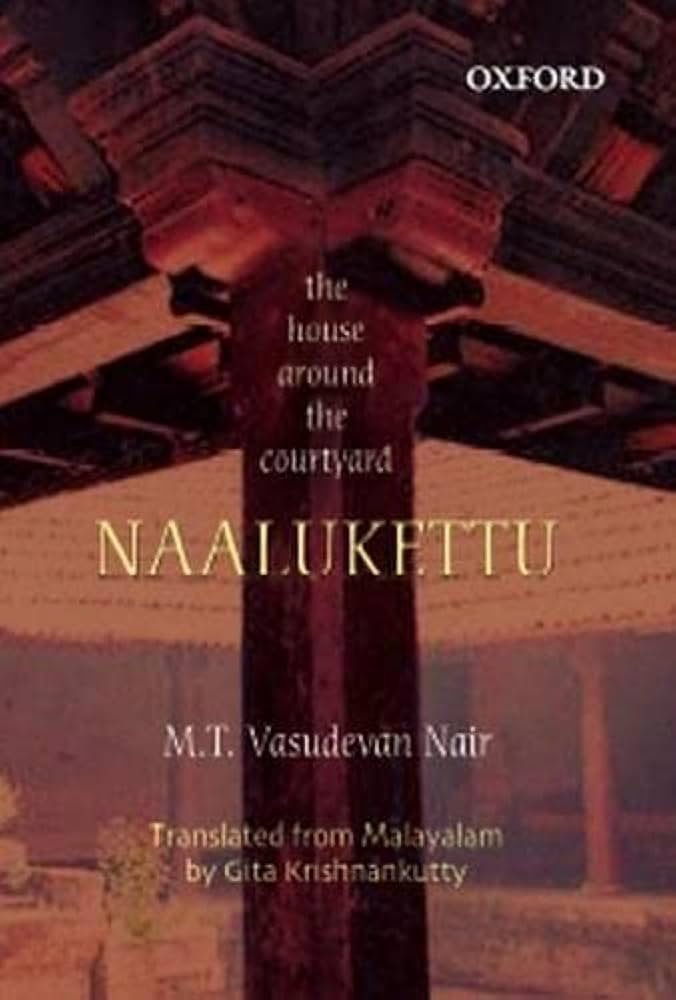
However, despite capturing the village’s unique character with a clarity otherwise unseen, the novel never pinpoints the period in which the village existed thus. There are only two instances in the narrative that lead us to intuit that the story takes place during British rule. One, is a reference to the village court. When the Vadekkepaat Tharavad is partitioned, Vakkil Kumaran Nair, the lawyer who oversees the partition is an attorney at the village court. The village court was the only institution that upheld justice in the district of Malabar during colonial rule. Two, is a mention that the manager of the plantation in which Appunni works as a field writer is a white man. (‘You’re going to study and become like a sahib, is it not?’ is also said elsewhere.) If one were to ignore these two allusions to colonial-rule, there is no reference at all to the 1940s in the novel. The question of why a novel that portrays a village, its structure, its people, and their way of life as distinctly as Naalukettu does, never delineates the period in which the world it describes exists can only be answered thus: Naalukettu is the story of a place, not the story of a time.
Naalukettu does not acknowledge the time period in which the said lives of the people of Kudallur unfolds. All the same, one can discern the changes that take place in their lives under the turn of history, as also the consequent and profound impact these changes leave on individual relationships and experiences. The effects of a changing economic system on familial and individual relationships, and the new emotional states that emerge therefrom are presented very clearly in the novel, in a manner hitherto unseen in any history book. Literature is not a history of events, it is a history of experiences. Naalukettu offers the reader a nuanced account of the transformation that family life underwent in Kerala in the 1940s.

One such element it highlights is the advent of the idea of ‘father.’ A character in one of N.S. Madhavan’s short stories is heard saying, ‘It has only been a generation since we got a father.’ The notion of the father was not of much consequence in the Nair community that functioned on the basis of marumakkathayam (matrilineal inheritance system) until the beginning of the twentieth century, but it became just as important within the next fifty years (In the nineteenth century, 56% of the families in Travancore followed the marumakkathayam system, says Canadian & Kerala historian Robin Jeffrey). In Chandhumenon’s first novel Indulekha, the father of the central characters, Indulekha and Madhav, plays no prominent role. In his later novel Saradha, one can say that the importance of the father increases. Noted lyricist and screenwriter, Dr. S. P. Ramesh observes that in the works of poet Edasseri, the father is conspicuous by his absence. Naalukettu minutely captures the historical arc of a gradually intensifying paternal relationality and its attendant emotional realm. Therein lies the uniqueness of the novel.
Naalukettu is the story of a son named Appunni who has no space in his heart’s pedestal for anyone other than his father. It is the father figure in Appunni’s subconscious who infuses the novel’s narrative with drama and intensity, propelling it forward. That it is the story of a changing order of inheritence, after the destabilisation of the marumakkathayam system and a generational shift towards nuclear families, is one popular reading of the novel. In the marumakkathayam system of inheritence, the father is merely a knot in the middle of the transfer of power from maternal uncle to nephew. It is the idea of the ‘father’ and the passionate world that surrounds this new relationship that form the subjects of Naalukettu. It would not be remiss to say that the novel has no more than captured the history of the development of the premise of the ‘father’ in the state of Kerala. It is only in Appunni’s imagination that his father, Kondhunni Nair, becomes a big man, a heroic figure who is self-respecting and loved by all. Audaciously whisking a girl away without the permission of her family and marrying her, defeating all his opponents in a game of dice—Appunni pieces together such scraps from stories he hears about other people, and pictures a make-believe father. This, per se, is made possible only by the fact that Appuni’s father is no longer alive. Had Kondhunni Nair continued his business dealings with Seydalikkutty and lived to see another day, Appunni’s world would have been no better than the ordinary, overlooked life of an average man. The larger-than-life figure of a father, one that grew and flourished in Appunni’s imagination, would have never come to be. It is death that offers a chance for one man to grow in another’s imagination. A dead man is akin to a lost book—they offer endless reading possibilities.
And so it happens that Appunni considers himself a medium that fulfills the aspirations of a dreamt-up father. Even as a boy, he resolves that his only goal is to take revenge on Seydalikkutty, the man who killed his father. Donning the role of the protector of the honour of the woman his father loved and married, he thinks it his duty to fortify his mother’s sworn monogamy. Thus, safeguarding his husbandless mother’s monogamous-chastity is the second duty Appunni takes on in the name of his father. As soon as it appears to him that his mother is faltering from that ideal, he forsakes her. It follows therefore that Sankaran Nair, who assumes his father’s place, also becomes his adversary.
But the transformation that takes place in Appunni in the last section of the novel is one that leads him to forgive his father’s (and by extension, his) enemies. Well before the story ends, he begins to view Seydalikkutty, his father’s killer, as an innocent man. (Seydalikkutty, bedridden after a stroke, says, ‘I ended up like this because of what I did.’ Man can forgive once God has meted out punishment, can he not?) At Seythalikutty’s prompting, he forgives his mother and goes back home to visit her. For his mother’s sake, he also forgives Sankaran Nair who she has since married. At the same time, he punishes his maternal uncle who insulted his father, mother, and himself, on behalf of all of them.
This novel is the tale of a deceased father who lives on in the thoughts and deeds of his son. Such passionate narratives founded on the relationship with the father did not exist prior to Naalukettu. No other work deals as dramatically with the poignant history of the changing inheritance system of the Nairs, Kerala’s second largest community, in the 1930s and 1940s. Seen in this light, Naalukettu is the novel form of Ravi Varma’s renowned painting There Comes Papa.
The most crucial force that enables Appunni to punish some people and pardon others in the process of fulfilling his father’s desires is the money he makes. At Wayanad Estate, he draws a monthly salary of one hundred and forty rupees. It is with the four thousand rupees saved from this salary that he buys the ancestral naalukettu house where he settles his mother and Sankaran Nair.
The four thousand rupees becomes as much a protagonist of the novel as Appunni’s father. It is also hinted that Appunni is thinking of spending more money in pursuit of renovating the naalukettu house. He intends to demolish that uninhabitable naalukettu house, build an airy, well-lit smaller house in its place, and establish a small unit sans the joint family. That he has the capacity to build a house for a nuclear family comprising father, mother and son indicates that he has the necessary funds for it.
So far as this novel is concerned, the history of the emergence of the ‘father’ is also the history of the emergence of a money-based economic system in Kerala (at least among one particular caste, the Nairs). Naalukettu is not merely the story of a transition from marumakkathayam or matrilineal inheritance to makkathayam or patrilineal inheritance; through the idea of the father, it also delivers an emotional account of how a feudal society that hinged on a barter system transforms into a money-based economy. What we see is a barter-driven society where money holds little intrinsic value, that is to say, one that is yet to move towards a cash economy. However, money has already become a strong presence outside it, exerting a pressure that in turn affects this society. Consequently, Kudallur is an agrarian village where the knowledge that money will soon be the sole factor of empowerment is sinking in little by little.
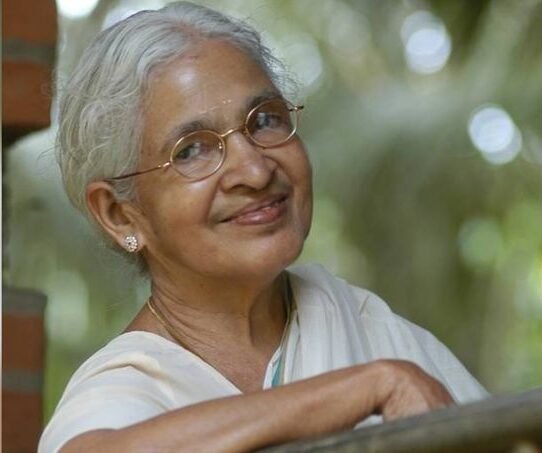
The novel presents the incumbent social structure in so much detail that it may well be a historical document. It is a patriarchal society with feudal tendencies built on top of the four varnas. Namboothiri households, such as ‘Mangothu’ and ‘Tenthethu’, alongside Nair tharavads like ‘Vadakepaat’ and ‘Kundangal’, are the ones who own agricultural lands. In the absence of alternative avenues for work, Paarukutty takes up the job of threshing paddy in a Namboothiri household. Wages are not paid in the form of cash but as paddy or rice. Similarly, the Cherumars (belonging to the Pulayar caste) who also engaged in agricultural labour in these houses received paddy, and not money, as wages. The children of the Cherumar caste compete with one another for the food remains on the leaf-plates that pile up in the banana plantation after the festive meal that concludes the sarpam thullal ritual in the Vadakkepaat Tharavad is over. These used leaf-plates are familiar not only to the Cherumar children but also to people like Paarukutty. It is on these used leaf-plates that Paarukutty is served lunch in the home of Manaikkal Namboothiri—you might recall Devaki Nilayangode’s essay, Ecchil or Leavings.
The novel also paints a picture of how tenancy-based paddy farming is run. In a house that receives tons of paddy as tenancy-rent, Paarukutty receives no more than two parai drums of paddy as wage. A valiyapara or big drum is used to measure the paddy received as rent. A seriyapara or kallapara, a small drum, is used to measure out the wages. It is on a parambu of raised land that Kondhunni Nair has leased from the Namboothiri household that he builds a house for himself and Paarukutty. By dint of hard work, he transforms the parambu into a garden of flowers. The Vadakepaat Nair tharavad would lease out only a small portion of its land, cultivating the rest of the holding themselves, for their own needs. At the time of the story, that circumstance has turned on its head. Even so, four oxen are still attached to their stable. The Thonikadavu land which yields three harvests of paddy a year still belongs to the tharavad. The tenancy system has become a stagnant economic arrangement that survives on paddy cultivation. It is only when money, the magic-spinner, enters the stage that the existing system is disrupted.
In the narrative, one can see Appunni’s maternal uncle feeling bitter about the houses of the newly rich coming up in Kudallur. ‘Ready money has entered the village now. There are many in the Nair community, too, who have more property than these upstarts. Those who once received paddy from the kallapara now live in mansions.’ The primary force that irked the key rights-holders (Nairs) in the feudal structure was the new money that flowed into Kerala during the first half of the twentieth century and shook their assumed superiority. One such newly-formed rich family was the Kundungal tharavad. The members of this family had amassed wealth while working as overseers in big households.
The novel also alludes to the appearance of cash at the master’s house. Unni Namboothiri, from the house of the Namboothiris, comes to school with a hundred rupees in hand. At the Vadakkepaat Tharavad, too, Appunni’s maternal aunt understands the value of money and starts saving some of her own. She is in a sambandham, that is, a socially sanctioned relationship with one of the Namboothiris. Selling the paddy she receives as rent from the land gifted to her by the Namboothiri, Appunni’s aunt saves up some cash. ‘Money that blossomed from her hand,’ remarks her brother and Appunni’s uncle.
Although his uncle detests other people’s money, he fills his own wife’s lap with the Vadakepaat chattels as if in anticipation of fathering a new generation that will bear his name. His daughter Amminiyedathi’s husband heads to Colombo, where he rakes in the riches. The influx of such money from the outside, and small cash-based transactions happening here and there, weakens the rigid agrarian economic system of Kudallur; it is at this point, when the economy is ripe for change, that the story of Naalukettu is set.
The new money-based economic order changes the narrative of Naalukettu in myriad ways, which in turn variously affect the characters in the novel. The lack of money births an acute sense of loss in the characters. Another of Appunni’s maternal uncle, Kuttan, who oversees the entire of Vadekepaat’s agriculture, never shying away from dirtying his feet in the fields, is not poor; still, he keenly feels the lack of ready money against his name. ‘Don’t have a single coin even to know how it feels to the touch,’ he laments. Even though he wishes to purchase gold earrings for his daughter Maalu, he is unable to rake up the four annas needed to pay the goldsmith, Kunju. ‘You must have some cash in hand,’ Appunni’s grandmother tells his uncle. In the old feudal order which had no use for money, no one felt any sense of loss about its lack thereof. Now, though, at a time when the economic system was in flux, the lack of cash evokes an acute sense of loss even among the upper strata of the society.
Appunni’s mind is imbued with the inferiority and ineptitude spawned by the paucity of money. ‘The son of the housemaid. Has no house to speak of. Nor money.’ This sense of inferiority drives Appunni to distance himself from the other boys. When all the students are asked to bring two annas for the performer of the ottan thullal dance, the empty-handed Appunni leaves school early. His mother is unable to garner the five rupees needed to purchase a brass lunch-box for school. When he struggles to pay the fee for his final exams, his uncle Kuttan, who had previously borrowed Appunni’s scholarship funds refuses to help him by returning it. Though his classmate, Unni Namboothiri, claims to have money, he says he would not be able to lend him some just then. Appunni is unable to apply for a railway clerk job for the reason that he doesn’t have the one and a half rupees required for it. Even when it finally looks like he might just secure a job in Wayanad, he doesn’t have the money to make the trip. Ramakrishnan Master comes to his aid by returning the fifteen rupees he had borrowed from Appunni. Two annas, four annas, four rupees, five rupees, fifteen annas, fifteen rupees… Most of the twists and turns in Naalukettu are a consequence of such paltry sums. Had Appunni not received the fifteen rupees for his journey to Wayanad, had his mother not paid the fifteen-rupee fee for his examination covertly, had Sankaran Nair not paid the five rupees for enrolling him in school, had he not received a monthly scholarship of six rupees for his education, the narrative of Naalukettu would have taken a different course. The one thousand rupees that laid ground for Kondhunni Nair’s murder was the largest sum that determined the trajectory of the novel. A thousand rupees changes the narrative of the novel as well as Appuni’s life. One can also argue that Appunni later reclaims his derailed existence with a sum of four thousand rupees. Seen in this light, the Naalukettu novel is nothing but the amalgamation of various denominations of money, from four annas to four thousand rupees. ‘Money’ is not a secondary theme in this novel; it is, in fact, a force so fundamental that it impacts the very emotional foundation of the novel.
How does Appunni arrange the four thousand rupees needed to buy the naalukettu house? The answer lies in the salary he makes as a field writer at a tea estate in Wayanad—one hundred and forty rupees per month and a yearly bonus which was the equivalent of five months’ pay. Setting aside forty rupees for his expenses, Appunni hopes to save the remaining hundred. Ramakrishnan, who is the only one in Kudallur to earn a cash-salary, cannot even dream of earning such a sum as Appunni. In the 1940s, such big paychecks were cut only by large capitalist enterprises engaged in agriculture, such as the British tea plantations.
In his book Modernism in Kerala, Dr. P.K. Michael Tharakan points out that the cash economy did not come first to paddy-growing areas like Kudallur, in Kerala, but to hilly estates such as Wayanad and High Range (the hilly regions in the state, with tea, rubber, pepper, and cardamom estates such as Munnar, Thekkady, Vagamon, Kumily, and Peerumedu). He also notes that it was the money that poured from cash crops cultivated by the Europeans in Wayanad in the Western Ghats that turned into salaries, investments, and company profits, in the late nineteenth and early twentieth centuries. It is this type of money-minting estate that rescues Appunni from the inadequacy of the feudal economic system of his hometown, Kudallur. Many money-spinning small-scale estates appear throughout Naalukettu, though they may not compare to the Wayanad estate where Appunni is employed, nor the money it generates. One of them is the nendran-banana plantation that Sankaran Nair cultivates to meet the need for some loose change every now and then.
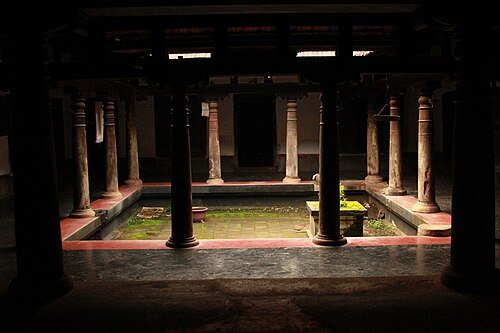
But, an even more concrete, significant, and plot-altering endeavour is the large estate that Kondhunni Nair starts with Seydalikkutty, planting tapioca seedlings along the riverbanks. An estate that would have gone for as much as a thousand rupees back in 1930. It is here that Kondhunni Nair falls victim to Seydalikkutty’s conspiracy, thereby becoming a blood-witness to plantation-farming. The blood-witness’ son, Appunni, dedicates his life to fulfilling his father’s unrealized dreams. From the big money-spinning estate he harvests whatever he needs, a sum far beyond any of his father’s dreams, a value (in multiples of thousands) his father never begot in any roll of his dice. Appunni restores the loss-making estate of his father’s by setting up an even bigger one, thereby fulfilling his father’s life-long dream. Father, Money, Estate—these three subjects are pillars that bear the structure of both the naalukettu home and novel. When the fourth pillar, ‘Son,’ joins this trio, the square configuration of naalukettu is complete.
A father-centric family structure built on top of the imploding marukmakkathayam system (matrilineal inheritance), an economic system that made this possible by being founded on money, the development of plantation estates that created and spurred the growth of money—that Naalukettu weaves this sweeping change that overruns Kerala in the 1940s into the narrative of a deceased father and a son who resurrects his dead father in his thoughts and deeds is central to its uniqueness.
One can say that the historical aspect of Naalukettu is etched into the landscape of Kudallur village. There are the naalukettu houses, the paddy fields, the river bordering the fields, the river bank, and the railway station beyond the bank. The trains departing from the railway station are like bridges. They rescued people from the inadequacies of the feudal system, escorting them towards the economic independence of the money-minting estate-lands. Kudallur, which is described at length in this novel is, in itself, symbolic. A comprehensive historical picture of the times is reflected in its narrative. The town becomes a map of the journeys of many men who in the days to come would step out of their homes, cross their fields and riverbeds, and board trains to unknown cities.
No historical event is mentioned in Naalukettu. Even so, as ideas that birth emotional upheavals in the characters, as imprints left behind on human relationships, as an illustrative map of a town called Kudallur, these events constantly echo their presence to the reader. History can manifest as time’s imprints on a scarred, two-dimensional village; it can most certainly appear so at least in literature. And that is the Naalukettu novel for you.

*The quotations in this article are translated from the original essay (via Tamil) and are not quotes from Gita Krishnankutty’s translation of the novel.
Estates by K.C. Narayanan | An essay on M.T. Vasudevan Nair’s novel “Naalukettu: The House around the Courtyard” | Translated from Malayalam (via Tamil) by Swetha & Priyamvada




